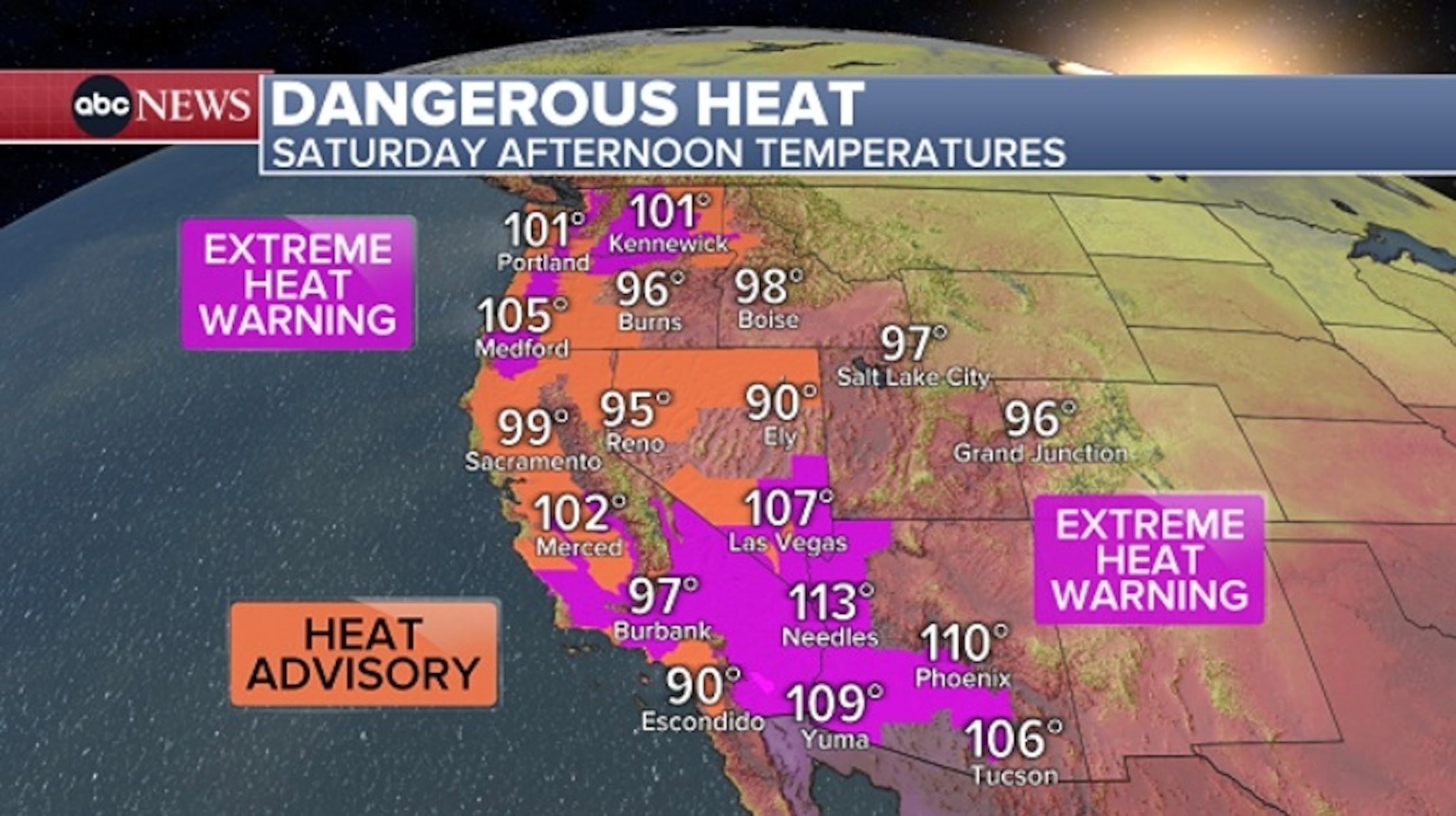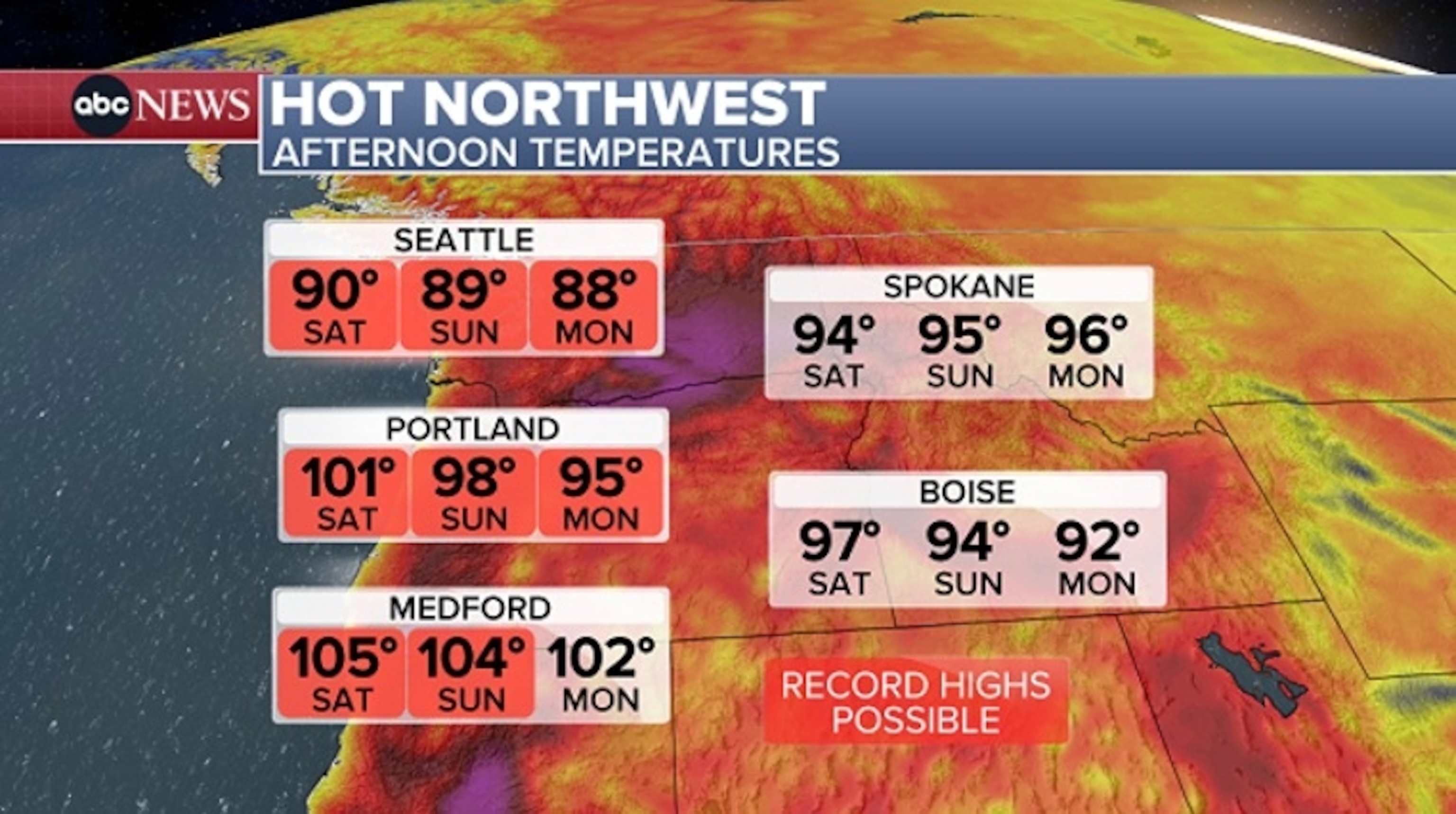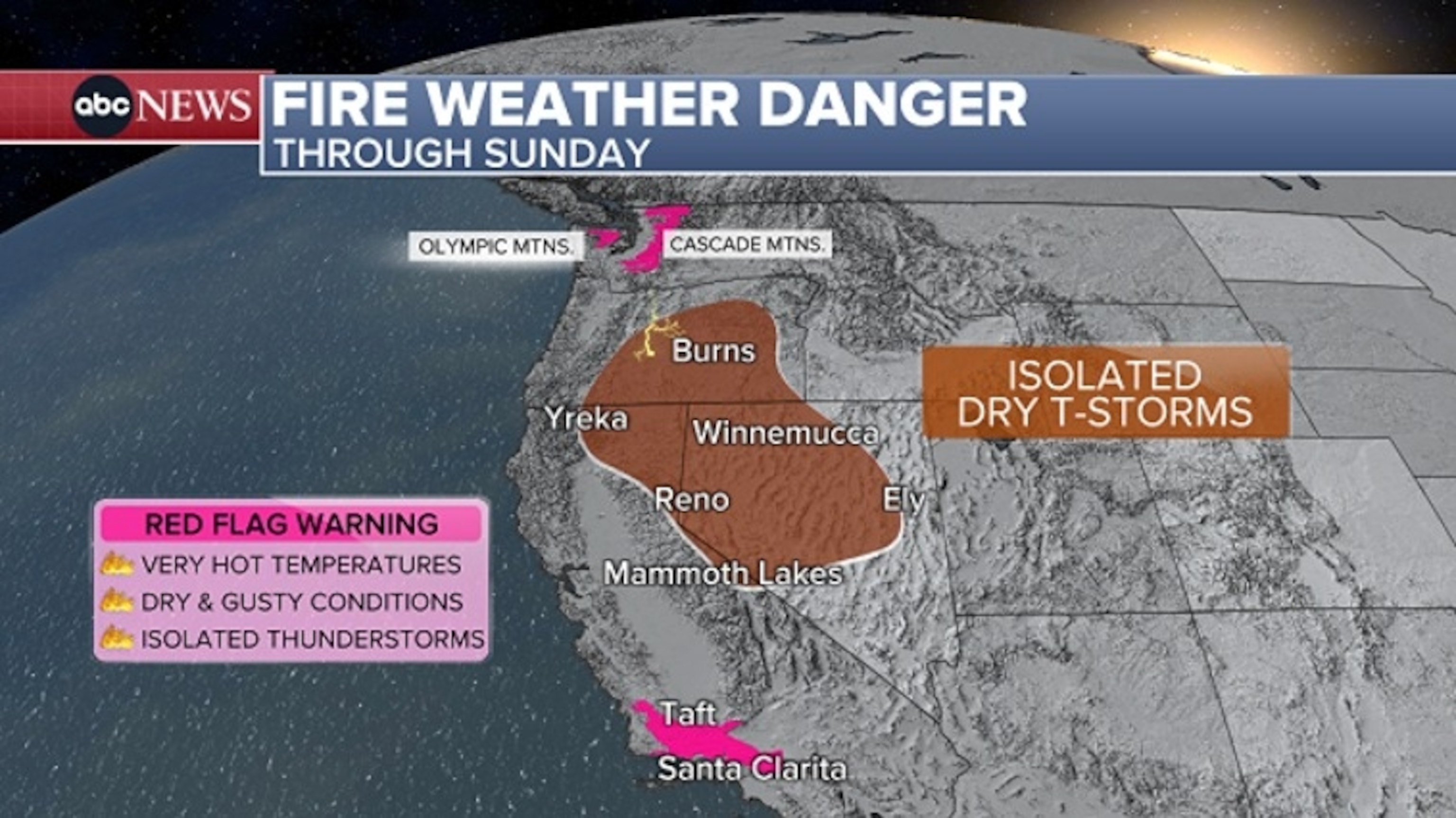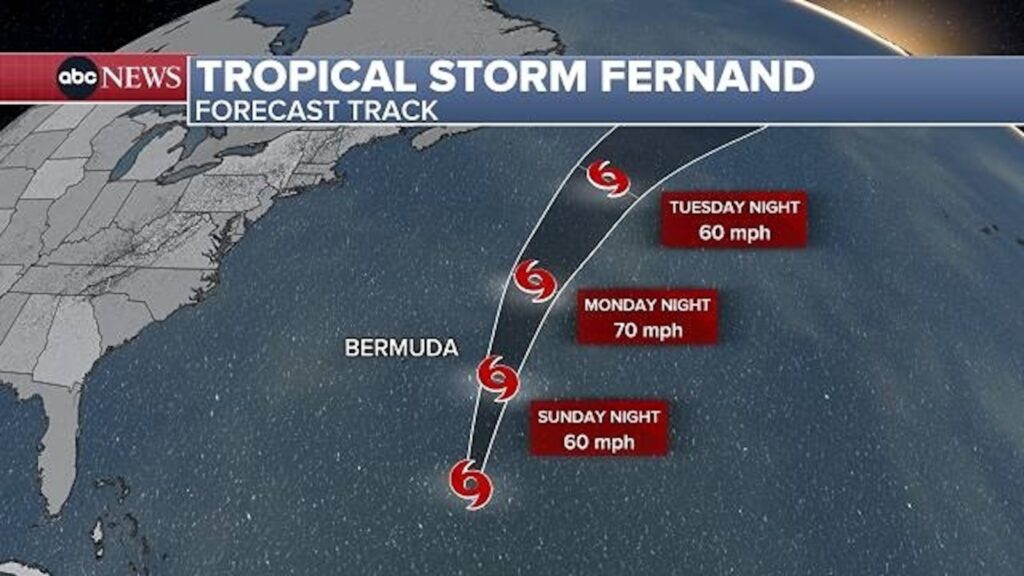Dangerous heat is impacting more than 50 million Americans in the West this weekend, with heat alerts in effect from Arizona to Washington.
An extreme heat warning is in effect for cities including Seattle, Washington; Portland, Oregon; Los Angeles, California; Las Vegas, Nevada; and Phoenix, Arizona.
A heat advisory is in effect for Riverside, California; Sacramento, California; and Spokane, Washington.
A boy shoots hoops at sunset on August 19, 2025 in San Pedro, California. The National Weather Service issued an extreme heat warning for parts of Los Angeles County which will be in effect from August 21 into the weekend, with temperatures expected to reach 110 degrees in some areas.
Frederic J. Brown/AFP via Getty Images
Temperatures on Saturday afternoon will be soaring into the triple digit across a large swath of the region, as far north as portions of Oregon and Washington.
New daily record highs were set in several cities in the West on Friday and numerous will be challenged in the region once again Saturday afternoon.
Several days of dangerous, record-challenging heat will impact parts of the Pacific Northwest, including Portland to Seattle, a part of the country less accustomed to prolonged extreme heat.
Highs will be near 90 in Seattle through Monday with afternoon temperatures reaching the triple digits in Portland on Saturday and still soaring well into the 90s on Sunday and Monday. Daily record highs will be challenged in both cities over the next three days.

Relatively mild temperatures at night will make this heat wave even more dangerous since the warmer temperatures make it more difficult for people to adequately cool off overnight.
The extreme heat in southern California continues to fuel elevated fire weather concerns for parts of the region, including those dealing with wildfires recently. Red flag warnings are in place through Saturday for the mountains north of the cities of Los Angeles, Ventura and Santa Barbara, including places like Santa Clarita, due to the scorching heat, low humidity, and locally breezy winds.

The same pattern that is bringing the extreme heat in the West, is also bringing monsoon moisture from the Pacific up across the region. This is fueling more widespread monsoon thunderstorms from the Four Corners region to southern California. Localized flash flooding is possible where the heaviest rain falls. Lighting from these storms could also spark new fires in Southern California with the hot and dry conditions in place.
This expansive and enhanced area of moisture is also fueling isolated thunderstorms in parts of the Northwest. However, most of these storms will bringing lightning and little rainfall prompting red flag warnings for parts of the Cascade and Olympic Mountains in western Washington. Lightning strikes could spark new fires amid very warm, dry and locally breezy conditions.

The other area is a disorganized tropical wave in the central Atlantic, located about 650 miles east of the Windward Islands. Atmospheric conditions are becoming unfavorable for this disturbance to develop; however, the National Hurricane Center has maintained a low chance (20%) of development over the next seven days, for now.
It could bring locally heavy rain and gusty winds to portions of the Windward Islands over the next few days.
Tropical Storm Fernand forms in Atlantic

The peak of the Atlantic hurricane season is now less than three weeks away and the tropics remain active behind Hurricane Erin.
The National Hurricane Center is monitoring two tropical disturbances in Atlantic Basin, however, neither of these are currently a major concern or expected to bring impacts to the U.S.
The first, is Tropical Storm Fernand, which formed late Saturday afternoon over the middle of the Atlantic Ocean, several hundred miles south-southeast of Bermuda, according to the National Hurricane Center. Fernand is the sixth named storm of the Atlantic hurricane season.
The storm is forecast to march north over the open waters of the north-central Atlantic in the coming days.
Fernand is forecast to strengthen over the next 24-48 hours as it passes east of Bermuda Sunday night into Monday.
Currently, the storm looks like it will be far enough east of the island to limit any rain or wind impacts, however it could still bring a period of rough surf in the coming days.
The other area the National Hurricane Center is monitoring is a disorganized tropical wave in the central Atlantic, located about 650 miles east of the Windward Islands. Atmospheric conditions are becoming unfavorable for this disturbance to develop; however, the National Hurricane Center has maintained a low chance (20%) of development over the next seven days, for now.
It could bring locally heavy rain and gusty winds to portions of the Windward Islands over the next few days.
Lingering effects from Erin
Meanwhile, lingering rough surf and dangerous rip currents continue to put a damper on many beach plans across the East Coast.
The coastal impacts will continue to gradually diminish throughout the weekend, however dangerous rip currents, coastal flooding and rough surf impacts persist Saturday afternoon in many areas.
High surf advisories remain in effect along much of the New England coastline, from Rhode Island to Maine, as well as North Carolina’s Outer Banks.
Rough surf and large waves continue to batter the coast. From Rhode Island to Maine, large breaking waves between 4 to 10 feet are possible through at least on Saturday. Along the Outer Banks, wave heights between 6 to 9 feet are possible.
Coastal flood alerts remain in effect through today, from North Carolina’s Outer Banks to southern New Jersey for residual coastal flooding with 1 to 2 feet of inundation possible with high tide in some areas.
Dangerous rip currents persist along much of the East Coast, with most beaches under a high risk for rip currents this weekend.


